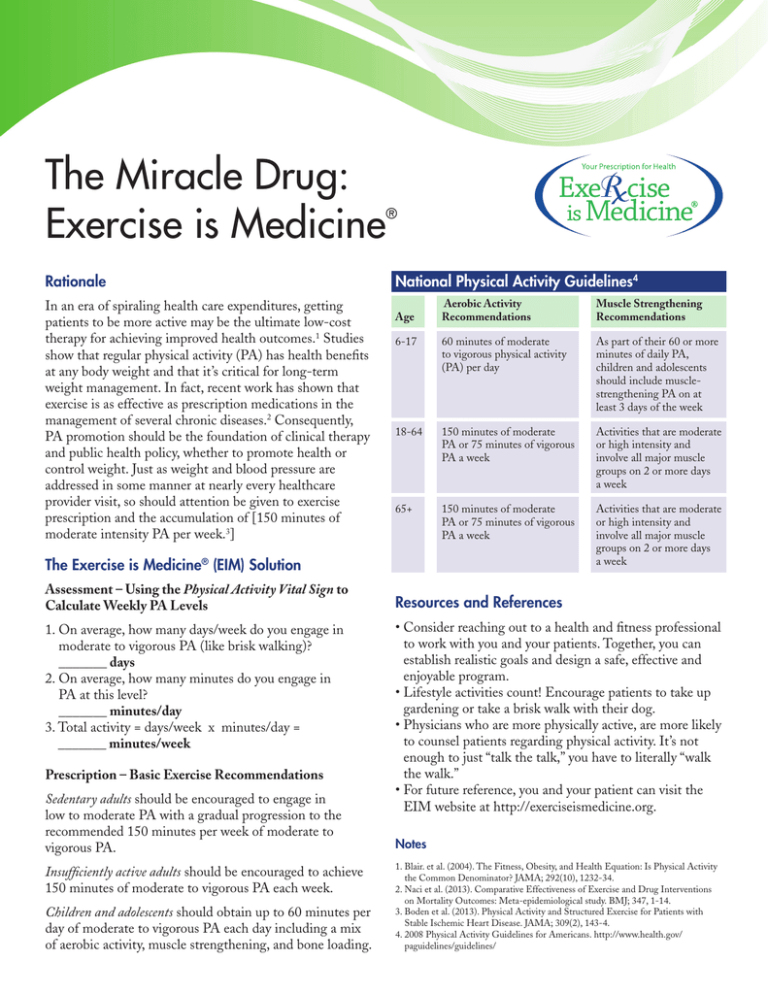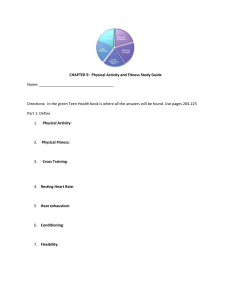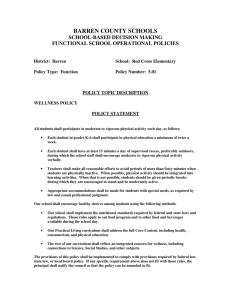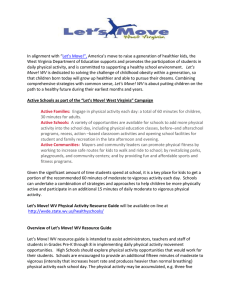Healthcare Provider Summary Sheet
advertisement

The Miracle Drug: Exercise is Medicine ® Rationale National Physical Activity Guidelines4 In an era of spiraling health care expenditures, getting patients to be more active may be the ultimate low-cost therapy for achieving improved health outcomes.1 Studies show that regular physical activity (PA) has health benefits at any body weight and that it’s critical for long-term weight management. In fact, recent work has shown that exercise is as effective as prescription medications in the management of several chronic diseases.2 Consequently, PA promotion should be the foundation of clinical therapy and public health policy, whether to promote health or control weight. Just as weight and blood pressure are addressed in some manner at nearly every healthcare provider visit, so should attention be given to exercise prescription and the accumulation of [150 minutes of moderate intensity PA per week.3] Aerobic Activity AgeRecommendations Muscle Strengthening Recommendations 6-17 60 minutes of moderate to vigorous physical activity (PA) per day As part of their 60 or more minutes of daily PA, children and adolescents should include musclestrengthening PA on at least 3 days of the week 18-64 150 minutes of moderate Activities that are moderate PA or 75 minutes of vigorous or high intensity and PA a weekinvolve all major muscle groups on 2 or more days a week 65+ 150 minutes of moderate Activities that are moderate PA or 75 minutes of vigorous or high intensity and PA a weekinvolve all major muscle groups on 2 or more days a week The Exercise is Medicine® (EIM) Solution Assessment – Using the Physical Activity Vital Sign to Calculate Weekly PA Levels 1. O n average, how many days/week do you engage in moderate to vigorous PA (like brisk walking)? _______ days 2. O n average, how many minutes do you engage in PA at this level? _______ minutes/day 3. Total activity = days/week x minutes/day = _______ minutes/week Prescription – Basic Exercise Recommendations Sedentary adults should be encouraged to engage in low to moderate PA with a gradual progression to the recommended 150 minutes per week of moderate to vigorous PA. Insufficiently active adults should be encouraged to achieve 150 minutes of moderate to vigorous PA each week. Children and adolescents should obtain up to 60 minutes per day of moderate to vigorous PA each day including a mix of aerobic activity, muscle strengthening, and bone loading. Resources and References • Consider reaching out to a health and fitness professional to work with you and your patients. Together, you can establish realistic goals and design a safe, effective and enjoyable program. • Lifestyle activities count! Encourage patients to take up gardening or take a brisk walk with their dog. • Physicians who are more physically active, are more likely to counsel patients regarding physical activity. It’s not enough to just “talk the talk,” you have to literally “walk the walk.” • For future reference, you and your patient can visit the EIM website at http://exerciseismedicine.org. Notes 1. B lair. et al. (2004). The Fitness, Obesity, and Health Equation: Is Physical Activity the Common Denominator? JAMA; 292(10), 1232-34. 2. N aci et al. (2013). Comparative Effectiveness of Exercise and Drug Interventions on Mortality Outcomes: Meta-epidemiological study. BMJ; 347, 1-14. 3. B oden et al. (2013). Physical Activity and Structured Exercise for Patients with Stable Ischemic Heart Disease. JAMA; 309(2), 143-4. 4. 2 008 Physical Activity Guidelines for Americans. http://www.health.gov/ paguidelines/guidelines/


